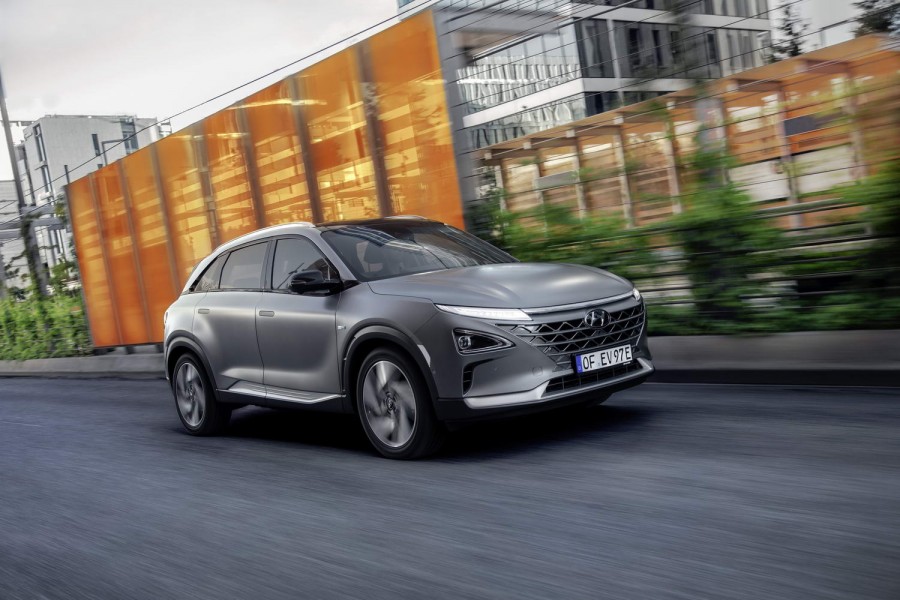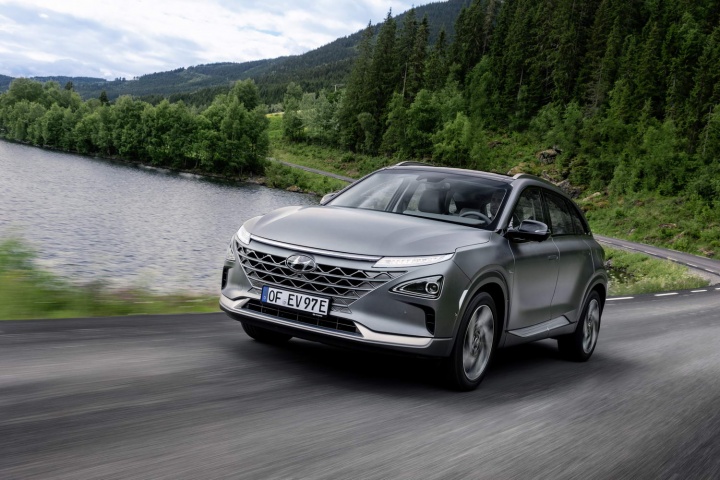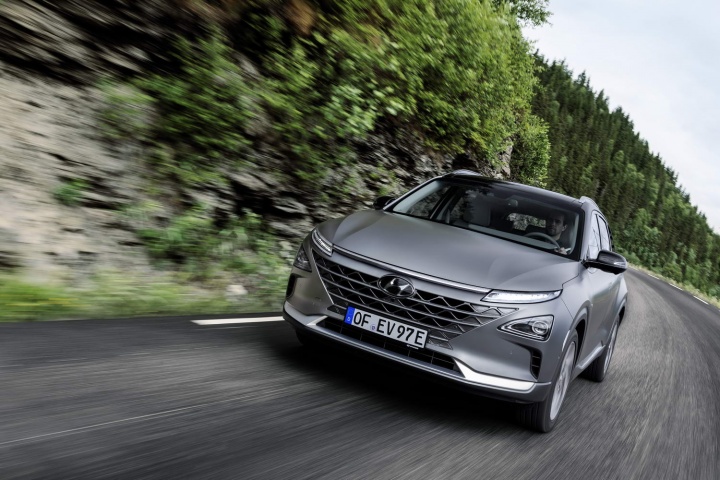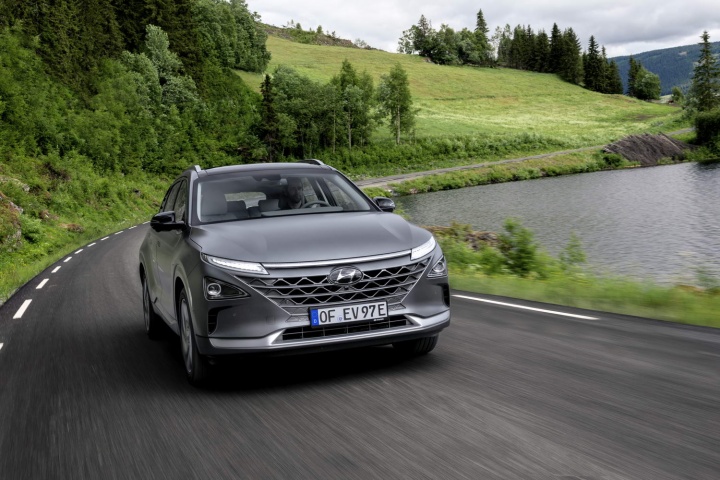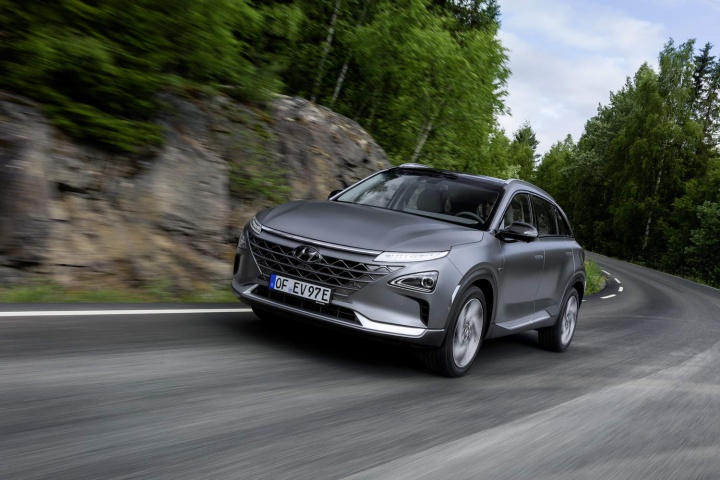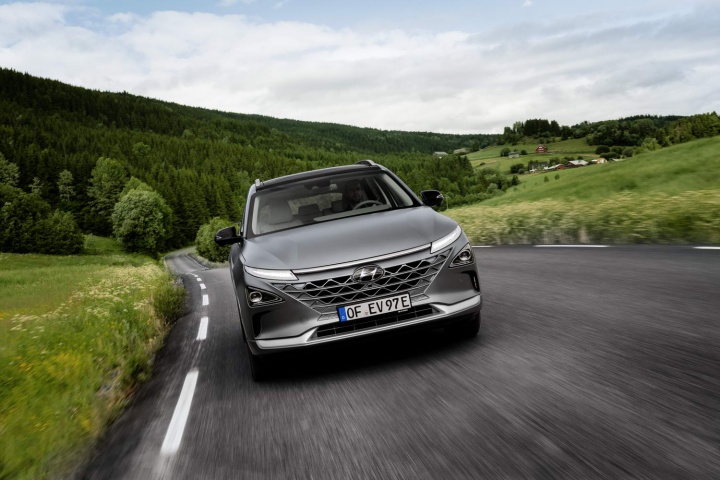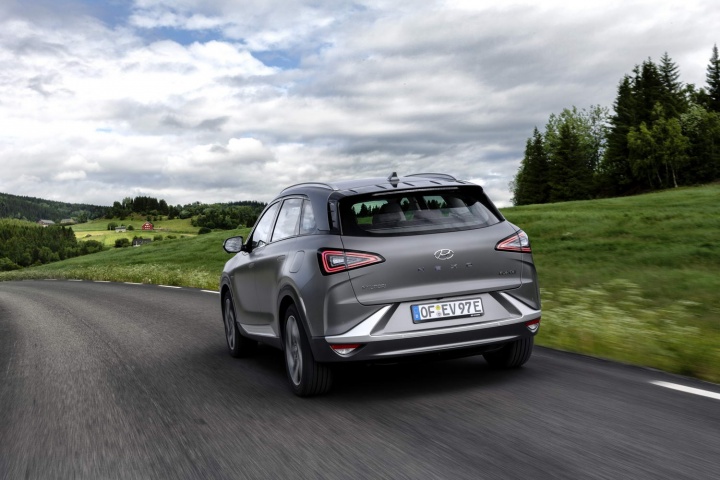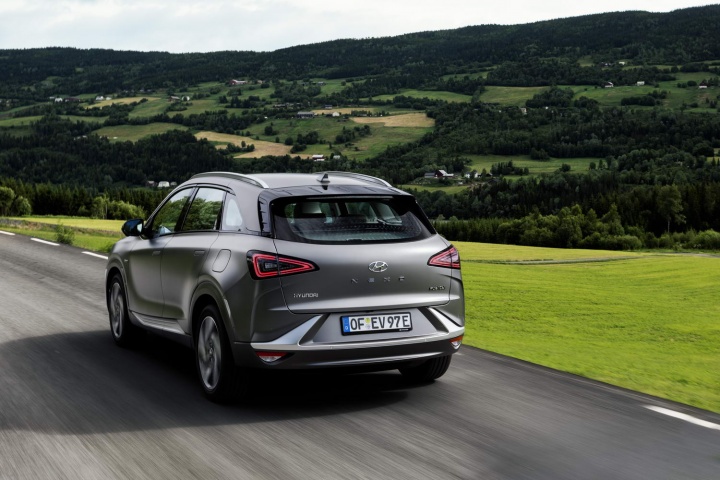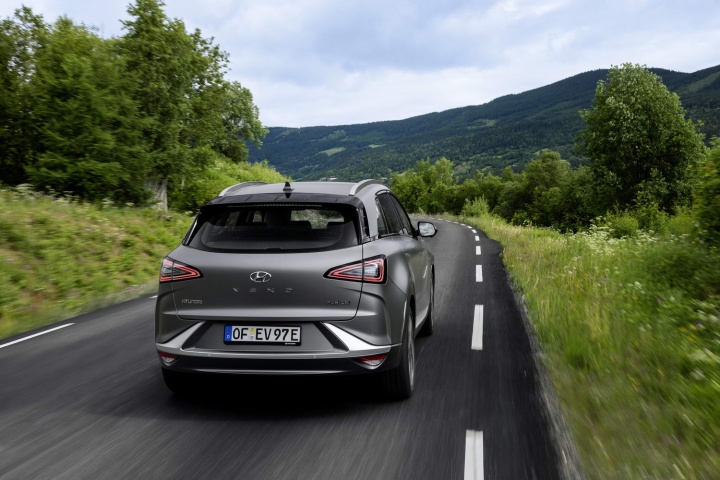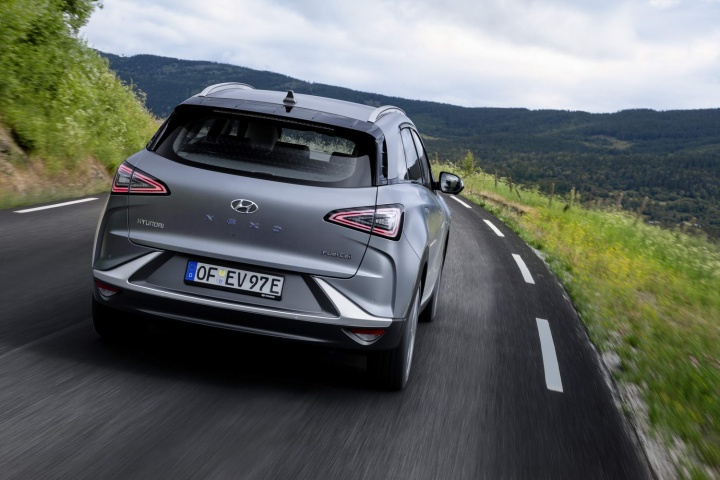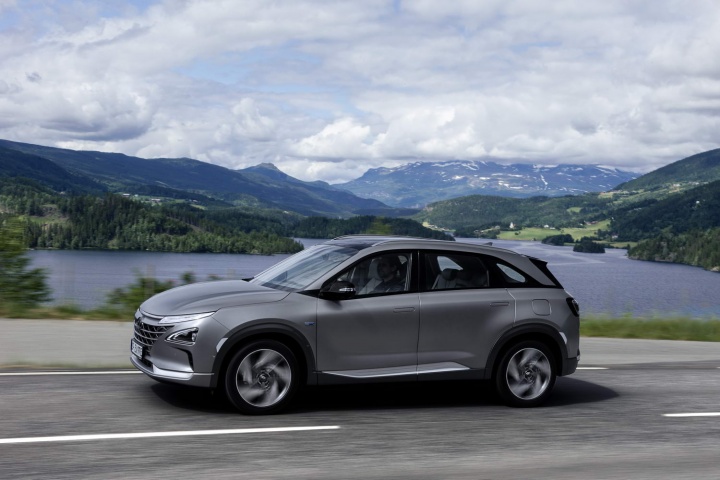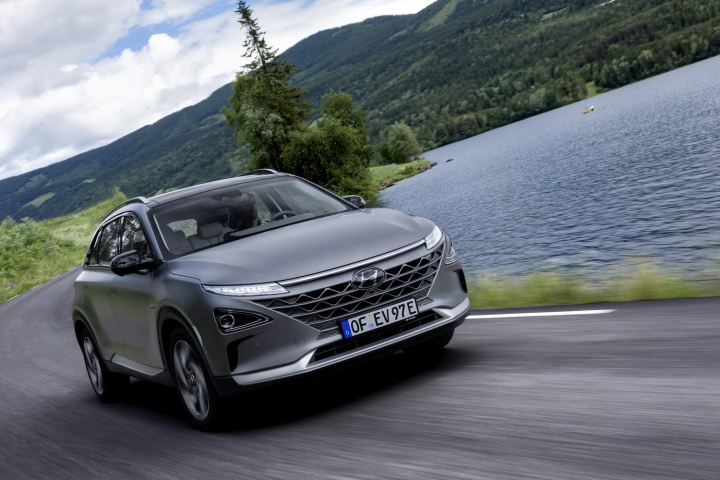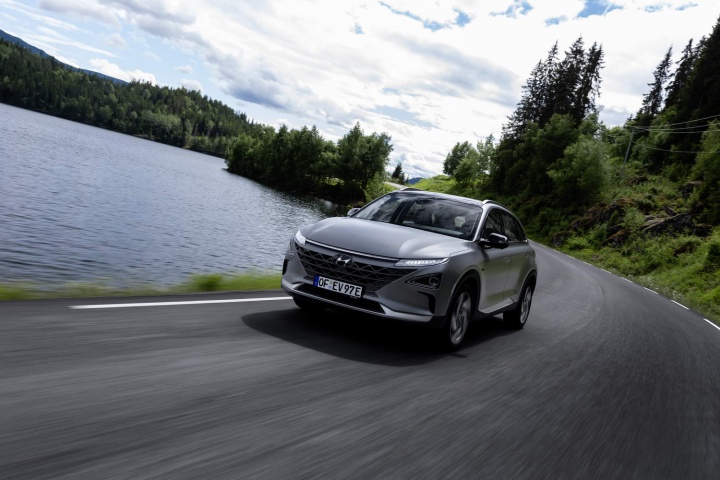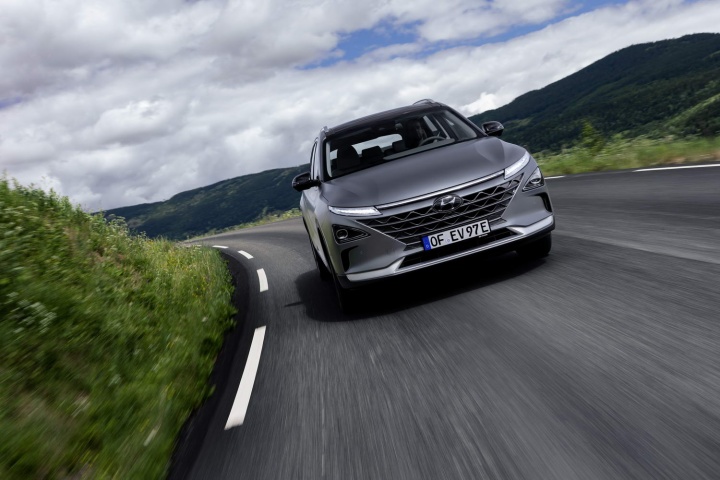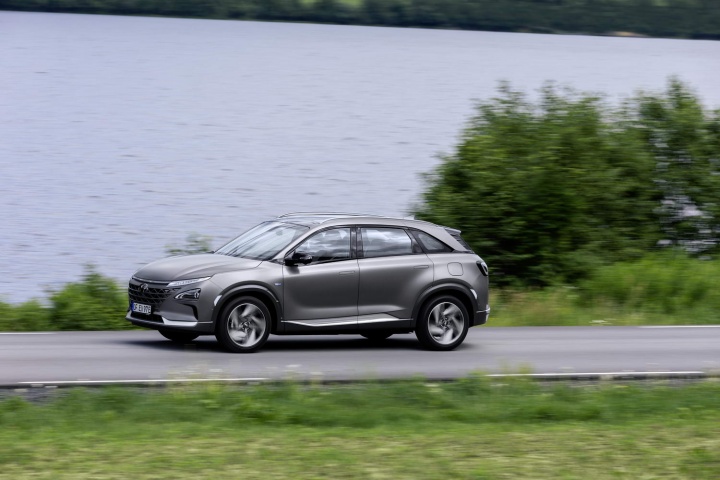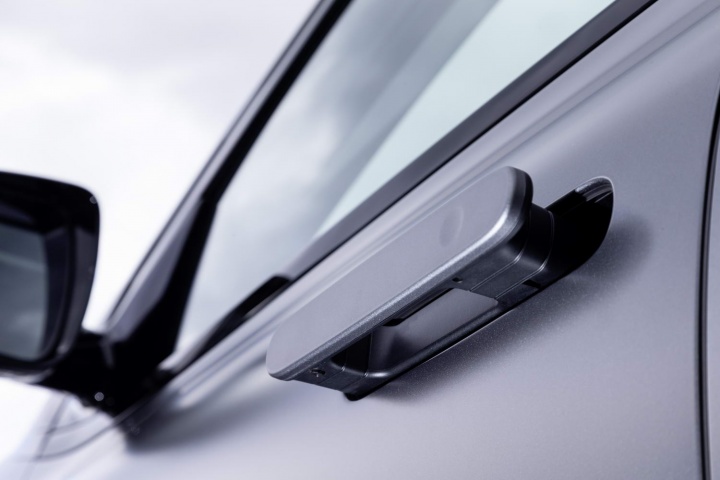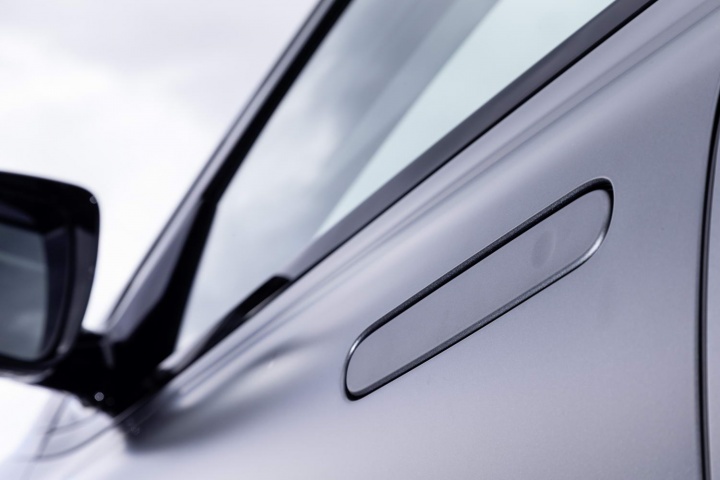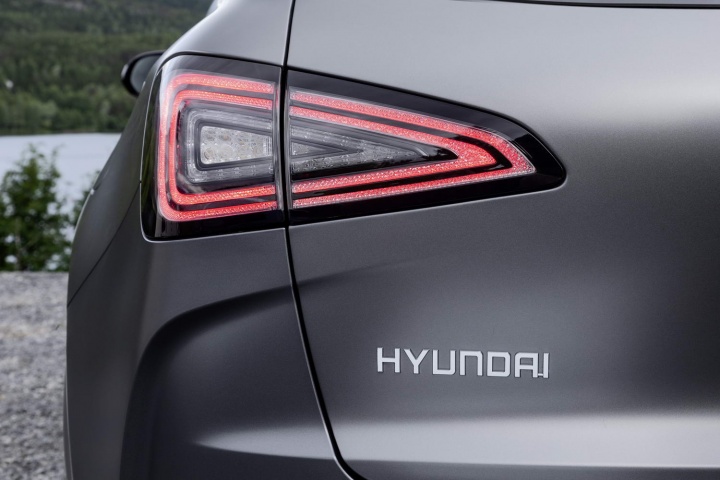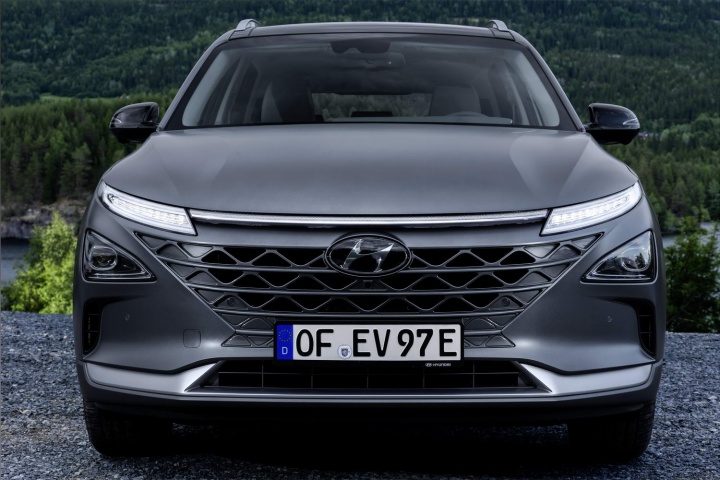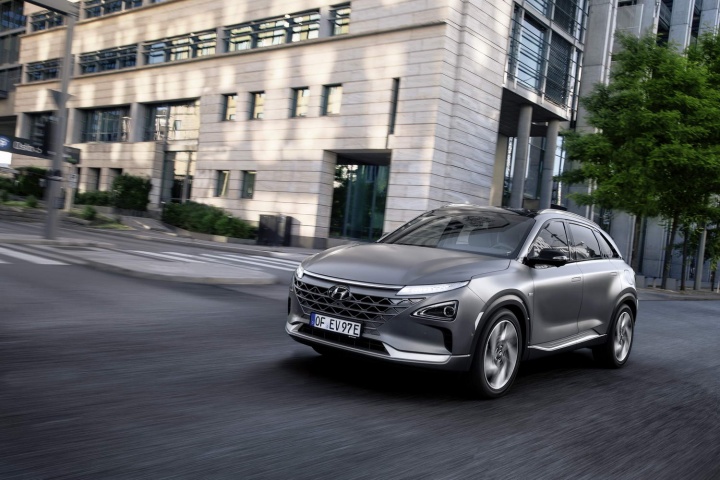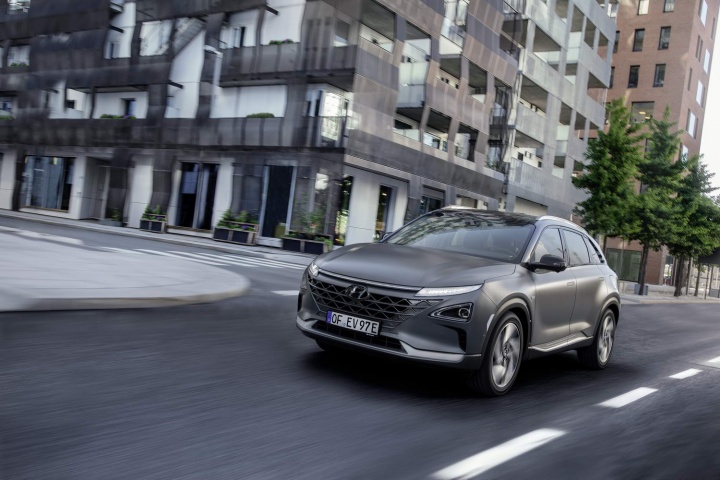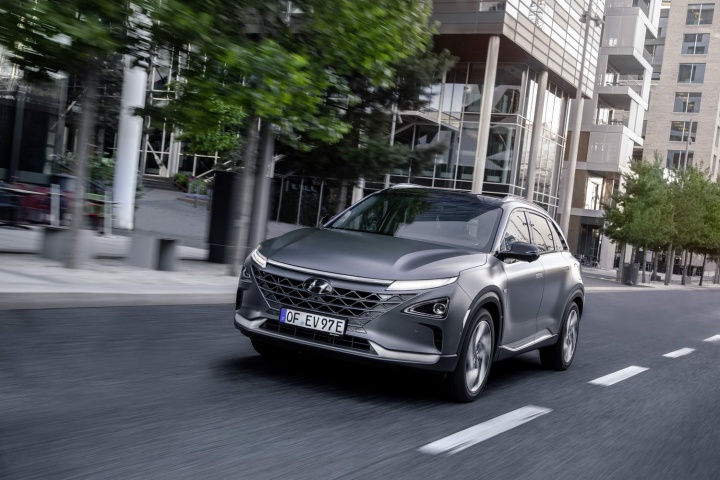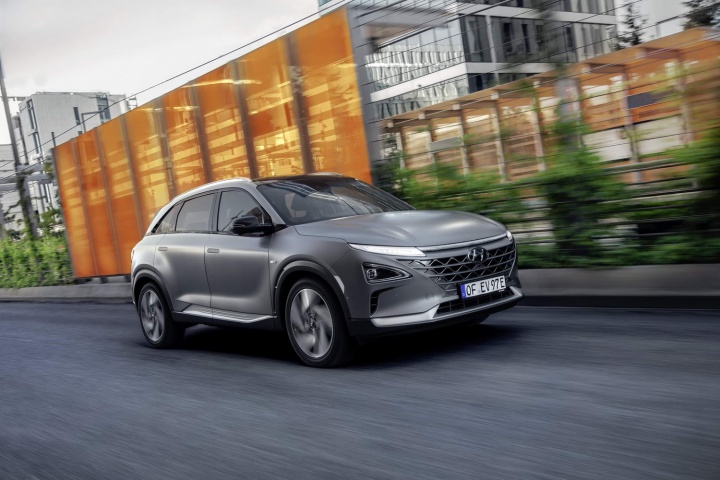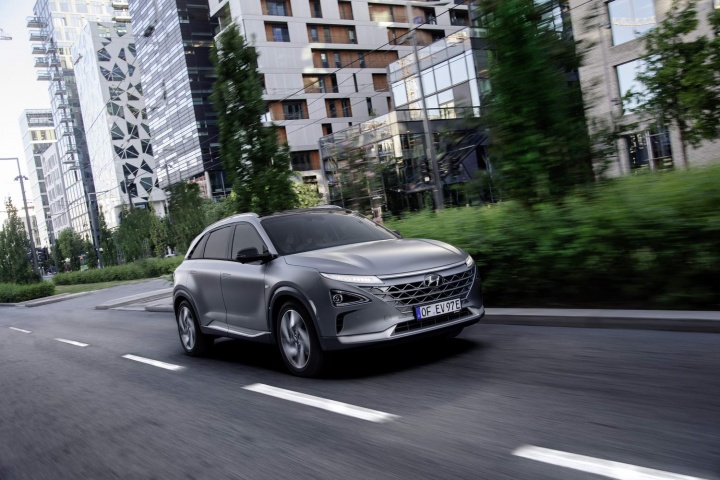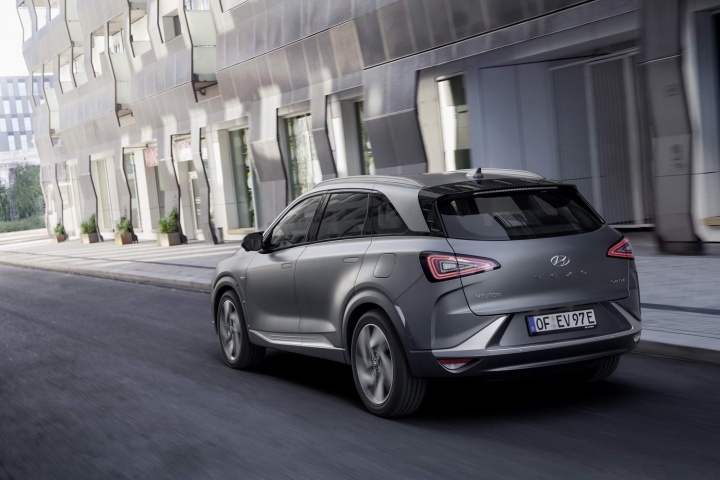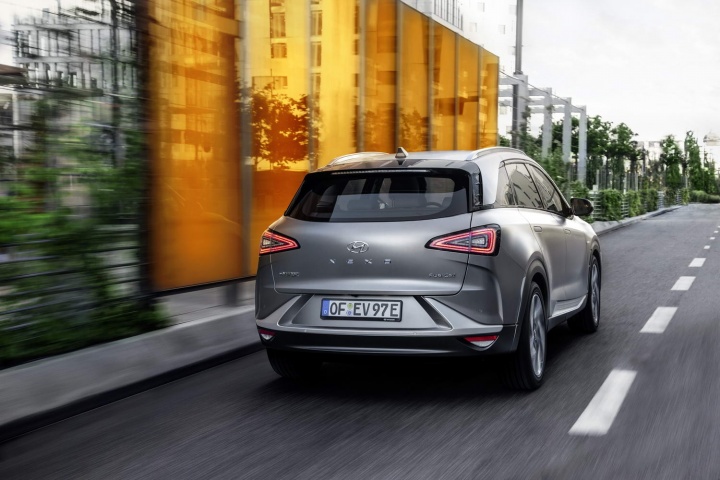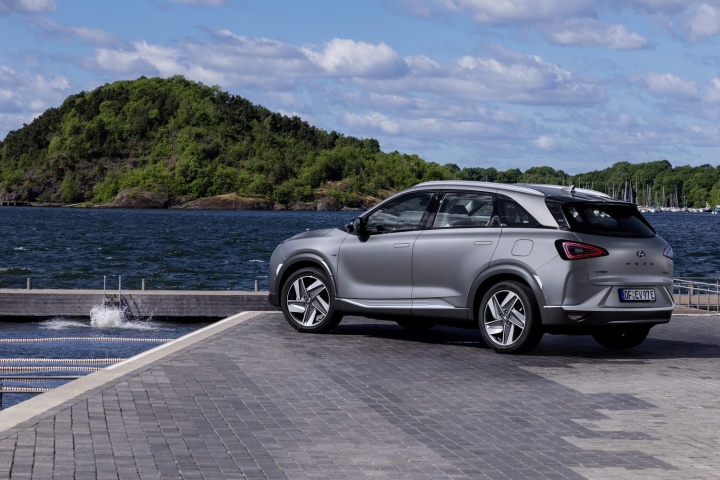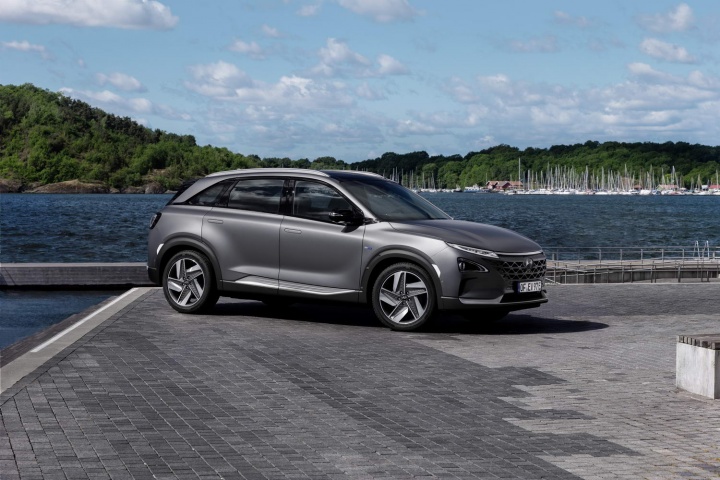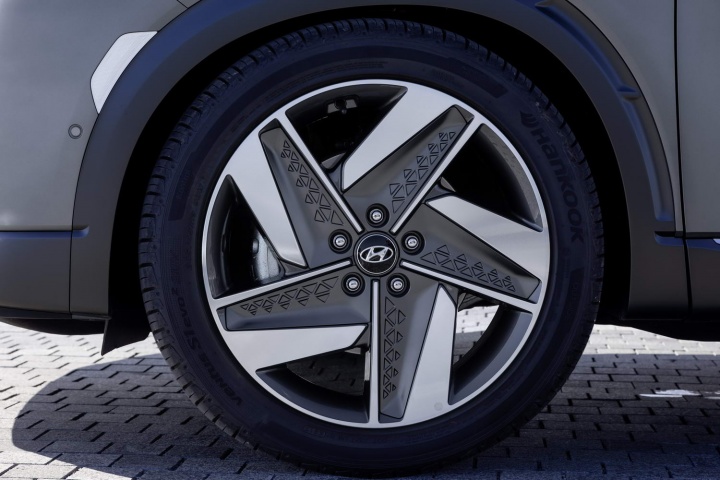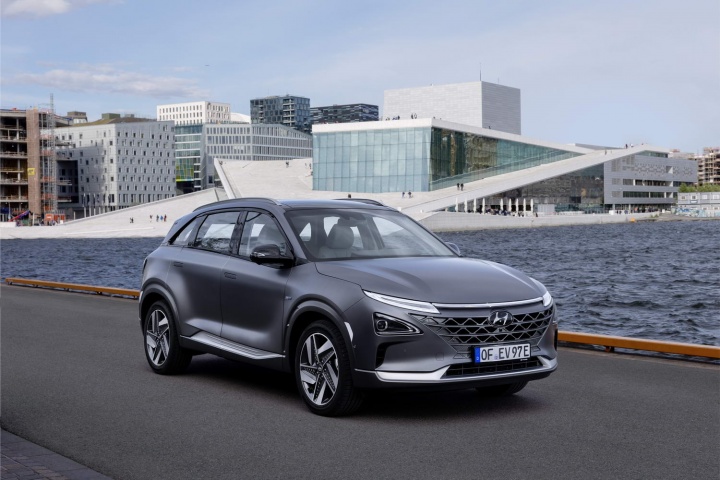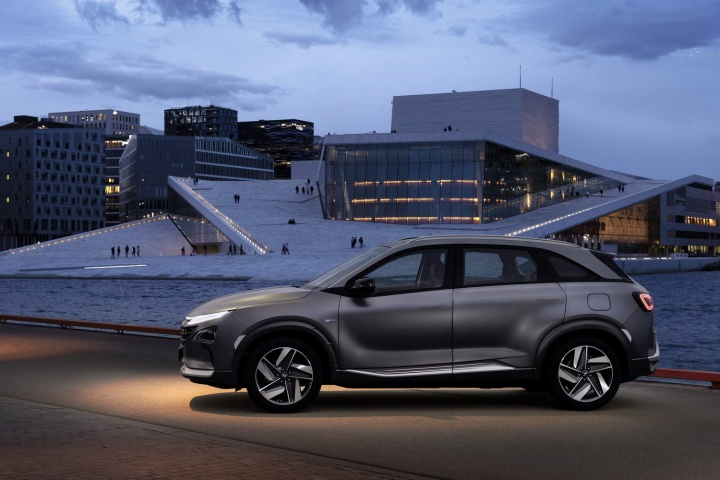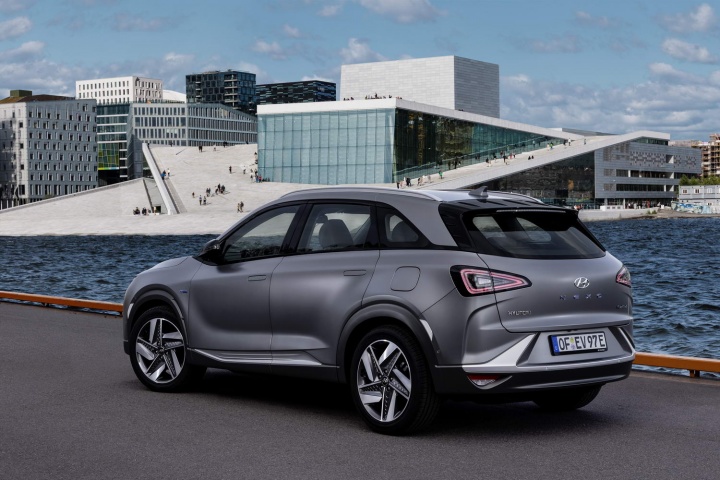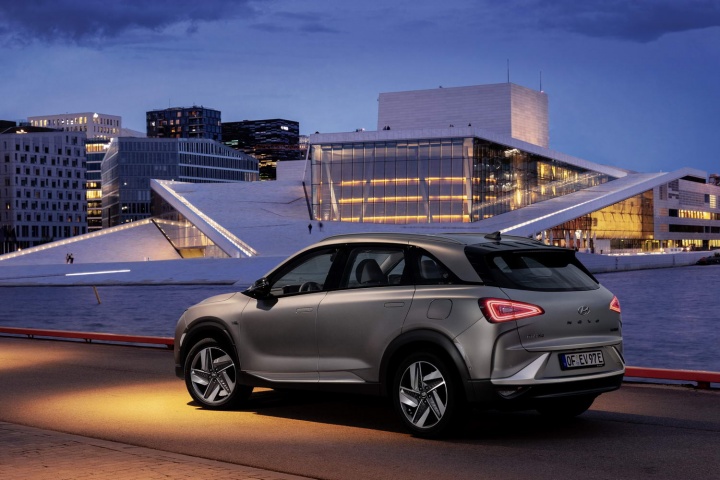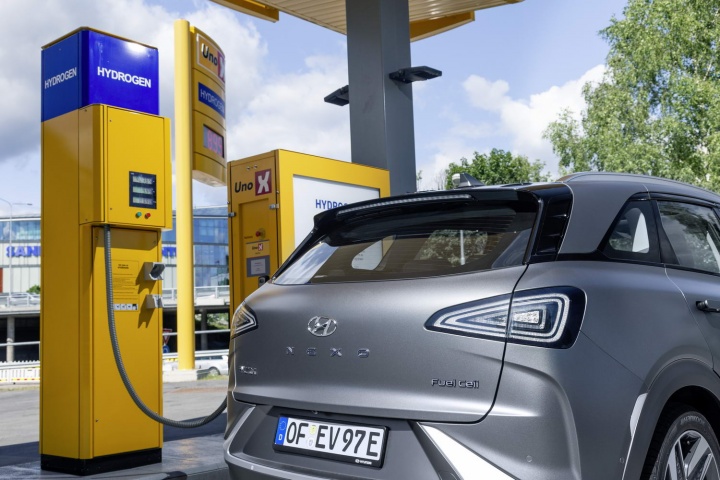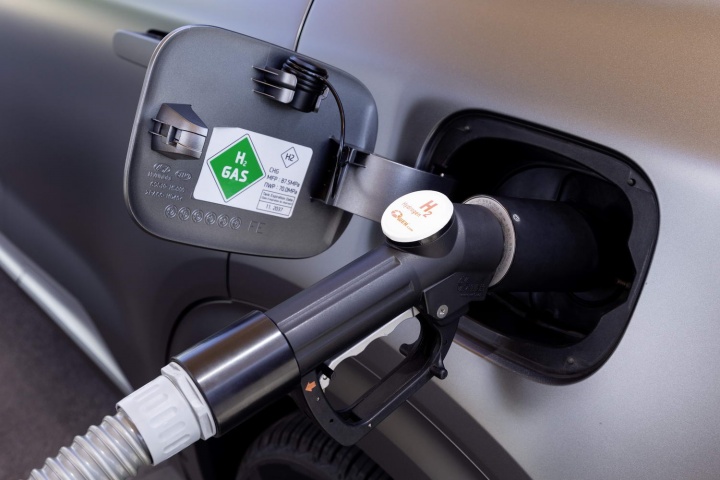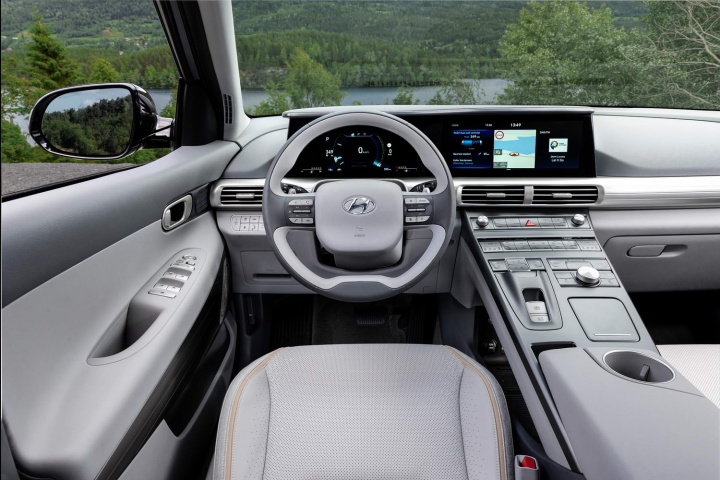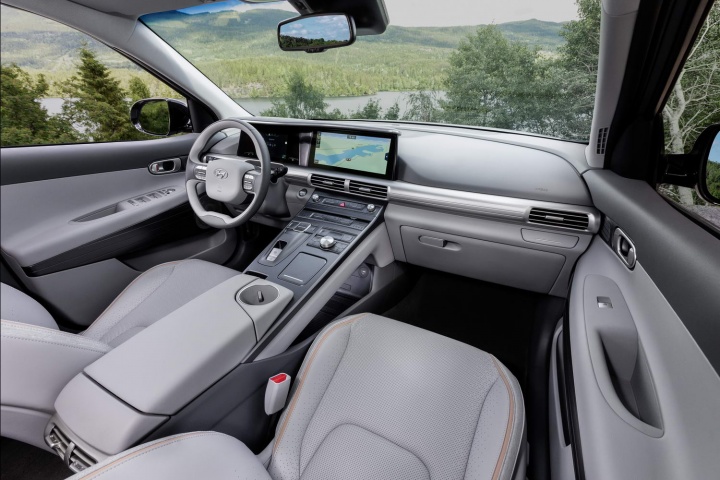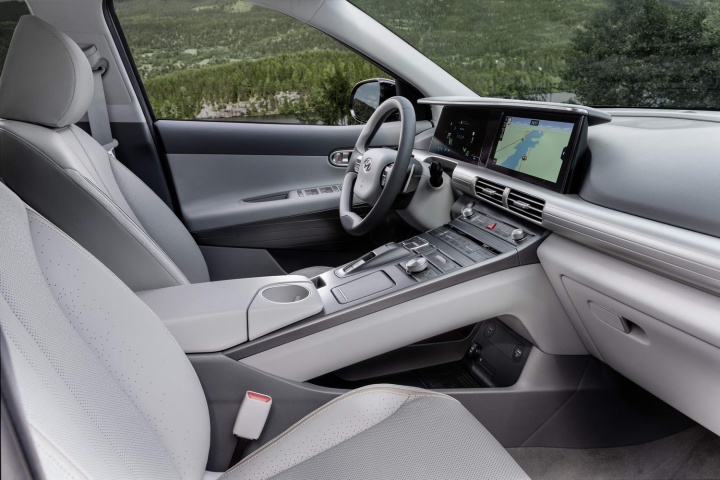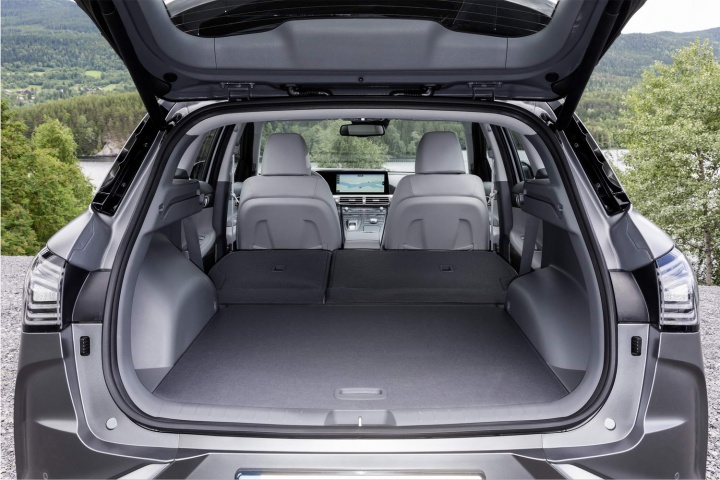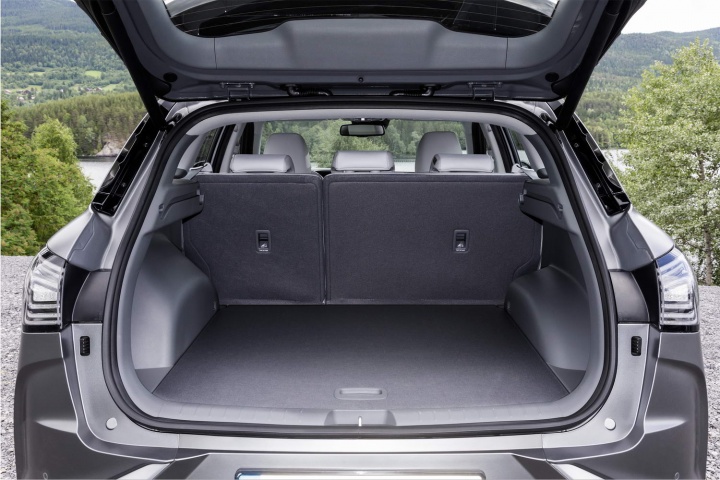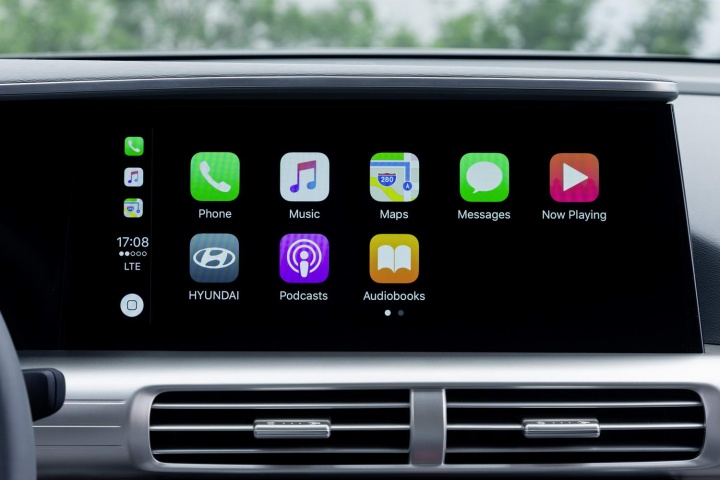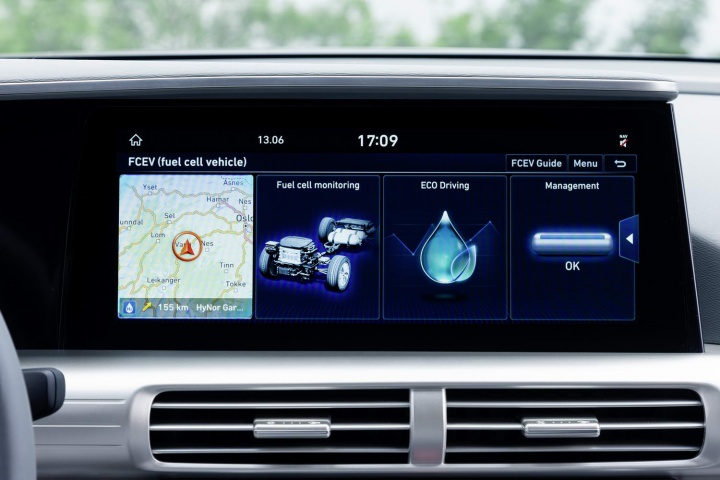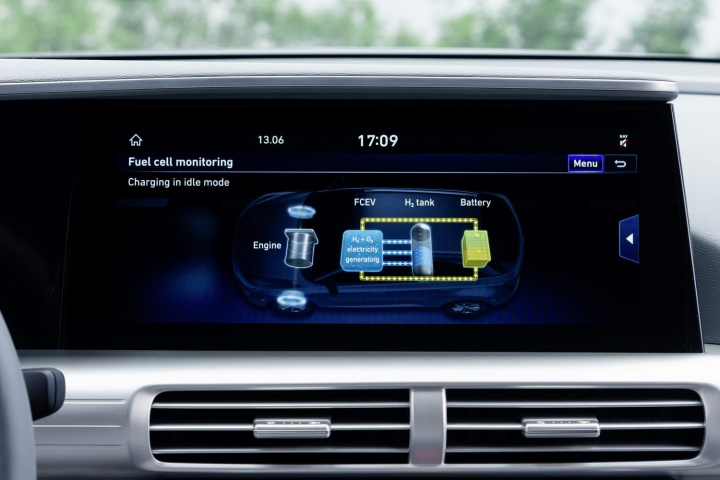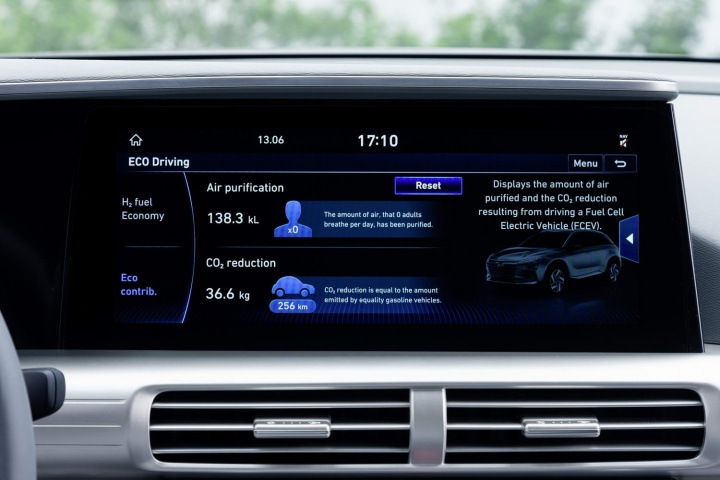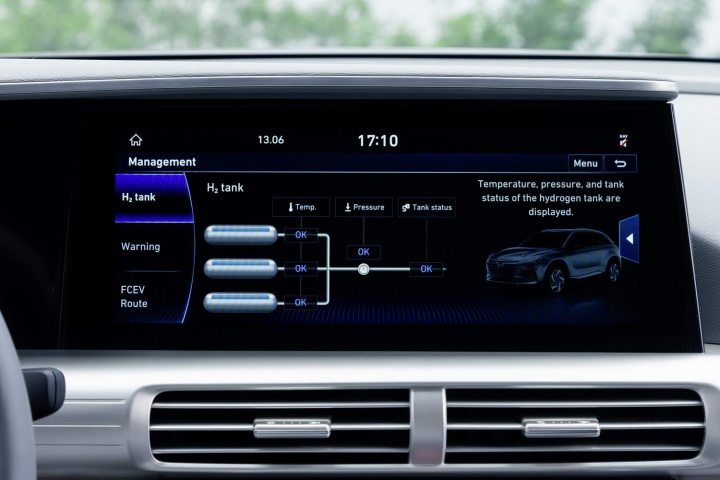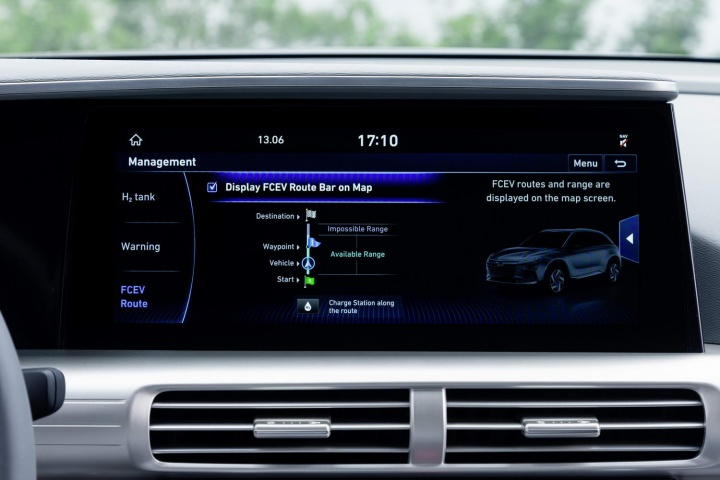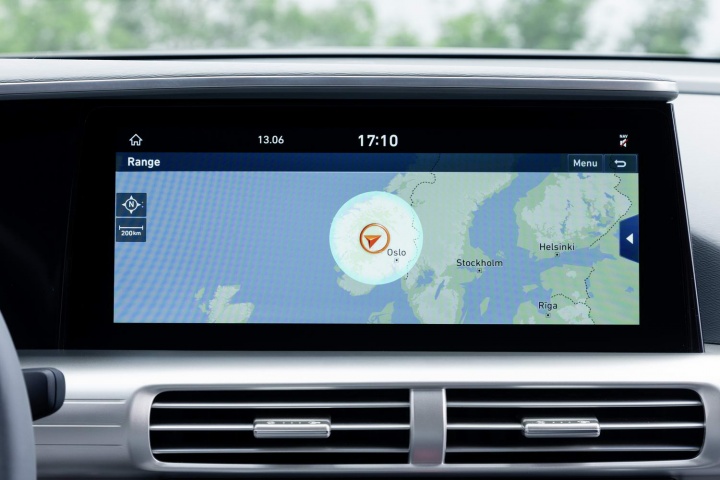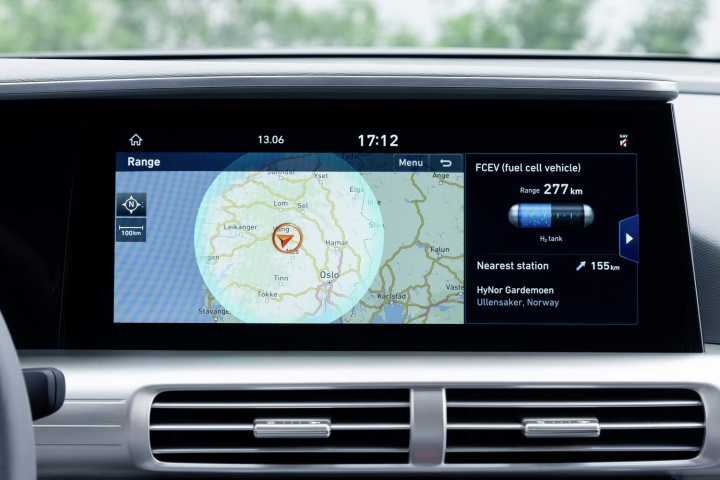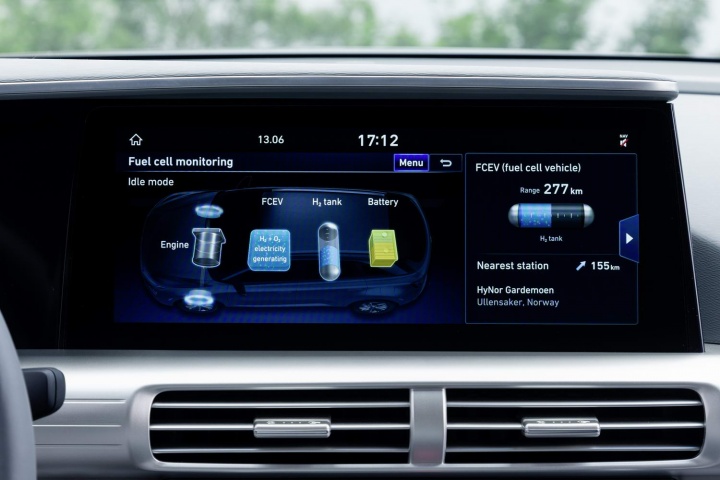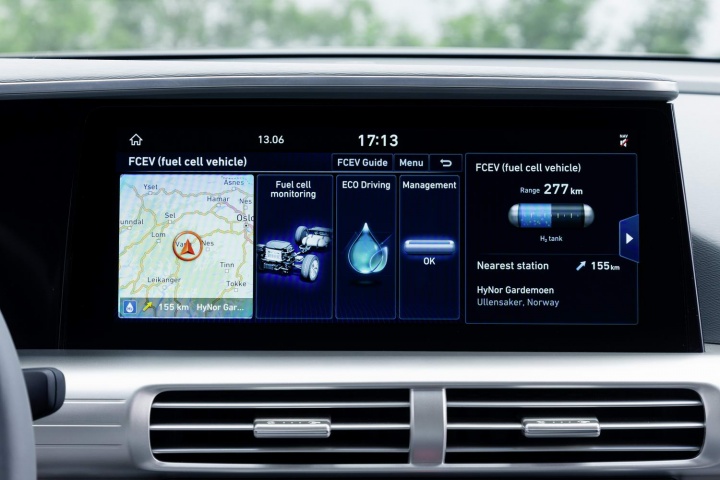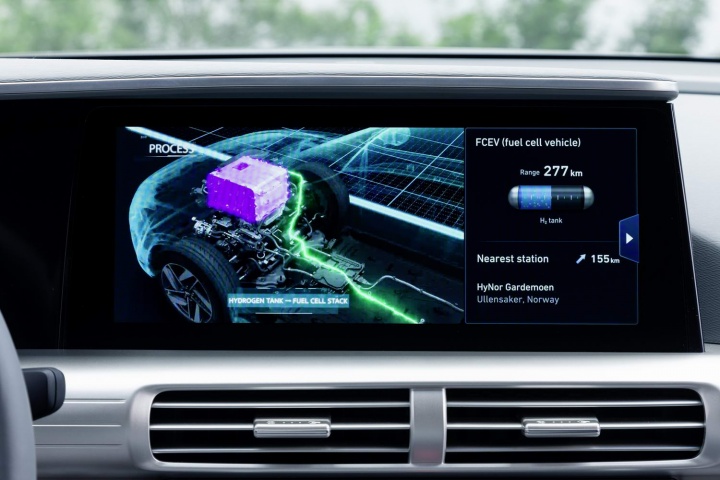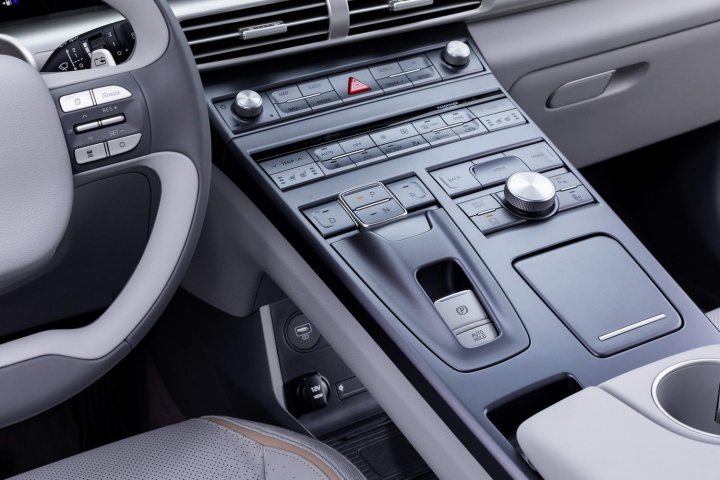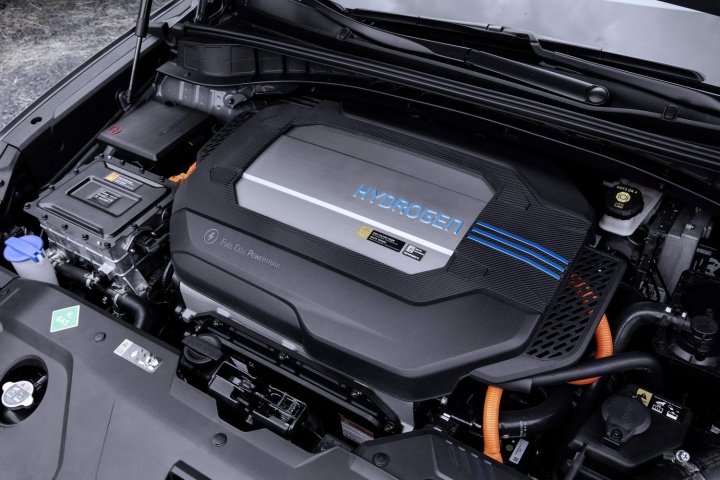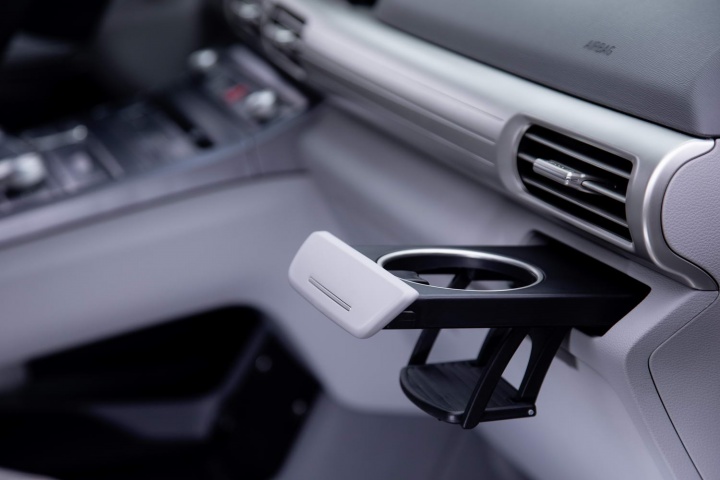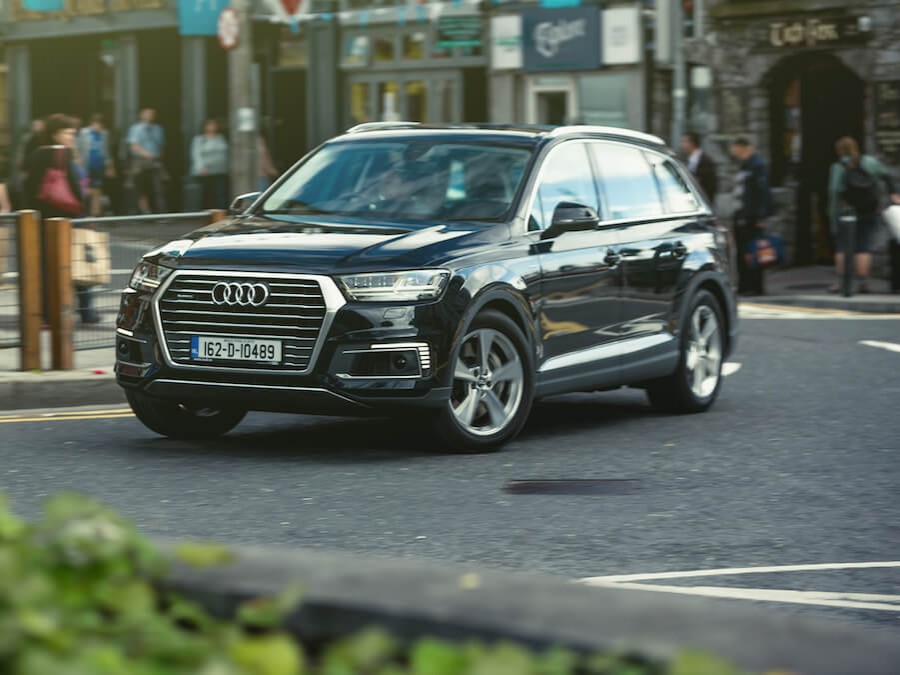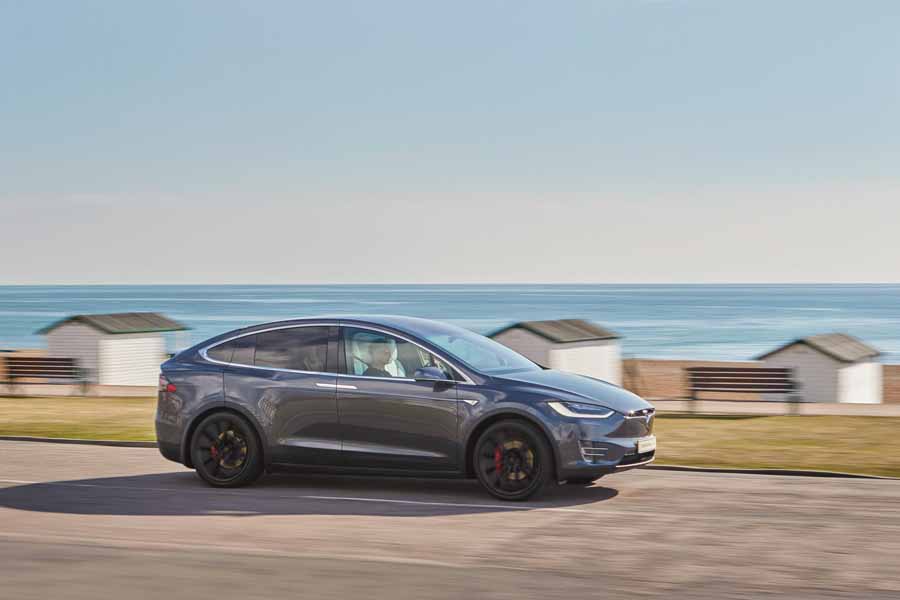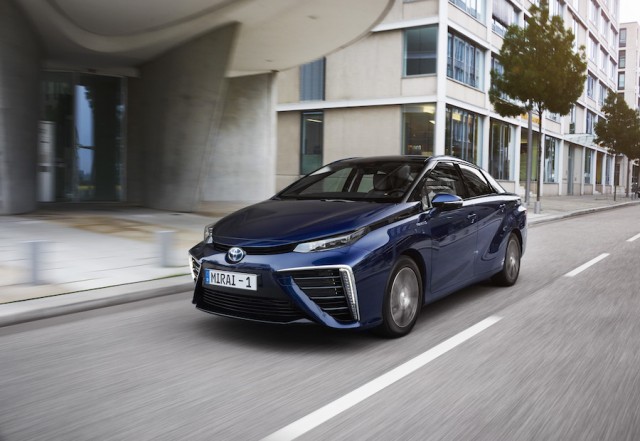Showcasing the latest in hydrogen fuel-cell technology, the Hyundai Nexo SUV features a unique exterior design with an environmentally conscious cabin and some smart onboard driver assistance systems. It isn't coming to Ireland just yet, but our test drive offers an interesting glimpse into a possible future for the car.
In the metal
The highly distinctive design of the Hyundai Nexo isn't just about marking it out as something unique to the rest of the company range, nor about creating a visual impact. Every aspect of the exterior shape focuses on making it as aerodynamic as possible, within the confines of its functionality. The front grille is wide to draw in more air, for example, something that's a necessity for the fuel cell that powers it. Slender high-set LED daytime running lights are joined by a light bar that runs across the top of the grille, giving the Nexo quite an eye-catching appearance as light falls.
Another part of the car that optimises aerodynamics is the door handles, which, like those on the the Range Rover Velar and Jaguar I-Pace, retract when you lock the car or when it accelerates above 3km/h, to form a flush seal with the rest of the door. The driver can also specify to have just one or several slide open when unlocking the vehicle, to suit their preference. Meanwhile, the lower sections of the front bumper channel air around the wheels, which themselves are shaped not just to look nice but allow just the right amount of air in to cool the brakes. Look closely at the C-pillars, where the roof comes down to meet the rear of the car, and you'll notice that it features side vents that channel airflow more cleanly to the back of the vehicle. At the rear, the window wiper is hidden from view in the roof spoiler, contributing to the car's clean look.
The sense that you're in a car that isn't entirely conventional carries through to the interior. It is roomy inside, but isn't any more spacious than a regular vehicle in this size class. The raised centre console is angled and houses the shift-by-wire transmission control. By doing away with the need for mechanical linkages, space beneath is freed up to serve as additional storage, including a wireless charging pad and two USB ports. A seven-inch digital instrument cluster and 12.3-inch infotainment screen combine to form one widescreen dash-top display. These are capable of displaying numerous bits of car-related information in addition to satnav and smartphone connectivity.
The extensive use of greys and metallic finishes give the Nexo a somewhat futuristic feel inside, and Hyundai's designers have sought to make it more environmentally sound, too. Vegan leather and textile piping on the seats complement eco-fibres made from sugar cane for the floor mats and headliners. Even the paint on the interior surfaces is ecologically sound and contributes to improving the CO2 balance of the Nexo by a claimed 20 per cent. Unlike its predecessor, the ix35 Fuel Cell, the Hyundai Nexo eschews its two large hydrogen storage tanks for three smaller units, two ahead of the rear axle and one behind. Not only does this spread the load more evenly, but it allows the Nexo to have a practical 461 litres of boot space.
Driving it
The Nexo drives just like a more conventional electric vehicle. Its fuel cell mixes hydrogen with oxygen in a chemical reaction to generate electricity (and pure water), which powers the front wheels via a 120kW motor. The fuel cell stack itself can produce up to 95kW of power, and this is supplemented by a 1.56kWh battery that can add up to 40kW of power. Not only is that enough to provide maximum power to the motor, but it also leaves an additional 15kW to power the various ancillary systems in the car. The Nexo recuperates energy via regenerative braking and the driver can adjust the rate of this via the paddles on the steering wheel.
Performance isn't what you'd call fast, but it is adequate for a car of this size. There isn't that instant shove that many electric vehicles give you when you accelerate. You do feel the car's weight on the move, especially if you turn into a bend a little too quickly. There isn't the same sense of a very low centre of gravity that some other EVs possess. The steering is light and there is the choice of drive modes that subtly alter the performance characteristics, but the Nexo is set up for comfort rather than outright agility and, in that respect, we have little to fault it on. The ride comfort is smooth and the cabin is almost whisper quiet.
When it comes to refuelling, the time needed is about five minutes, so it hardly varies from that of a diesel or petrol car. Once filled, the Nexo can cover a total range of 666 kilometres according to the more stringent WLTP test cycle. The obvious downside is that hydrogen infrastructure remains very limited. Currently, there are only 15 stations in the United Kingdom, while small networks are also under development in other European countries like Denmark, Germany and Norway. Japan and California have more extensive networks. However, the industry expects that fuel cell electric vehicles (FCEVs) could account for 25 per cent of global sales by 2040. In the meantime, unless you're in those countries and live near to a refilling station, then a Nexo just isn't going to be a possibility for you.
What you get for your money
In addition to its fuel cell powertrain, Hyundai packs some of its latest driver assistance technology into the Nexo. The adaptive cruise control includes a more advanced lane following aid that ensures the car remains in the centre of its marked lane while driving. Other systems do this, but tend to bounce the car between the lane markings, whereas this is a more refined system. One feature we especially like is the Blind Spot View Monitor. When the turn signal is activated, a rear-facing wide-angle camera activates, and its image displays on the digital instrument cluster in front of the driver. The camera can enhance visibility in more challenging driving conditions, such as at night or in wet weather. Even after just a handful of times using it we quickly got used to it and found it beneficial.
Leaving aside the hydrogen infrastructure issues that we've already mentioned, the other obstacle at this early stage of fuel cell vehicles is the cost. Were the Nexo available in Ireland it could have an estimated price of approximately €75,000. You do also still have to pay for hydrogen and though in some markets it is sold at a slightly lower price than traditional fuels, it is nowhere near as cheap as recharging an electric car. The one advantage that the FCEV has over combustion engine vehicles and even EVs, is that, it not only has no harmful direct emissions, but it also purifies the air that it draws in at a rate that, according to Hyundai, cancels out the pollution of two diesel cars covering the same distance.
Summary
Hyundai has done an excellent job in creating the Nexo FCEV and by making it from the ground-up rather than adapting an existing vehicle, it makes for a more cohesive design. However, we can't look past the fact that the infrastructural limitations significantly limit its potential at the current moment in time. Nevertheless, it's a decent piece of kit.

